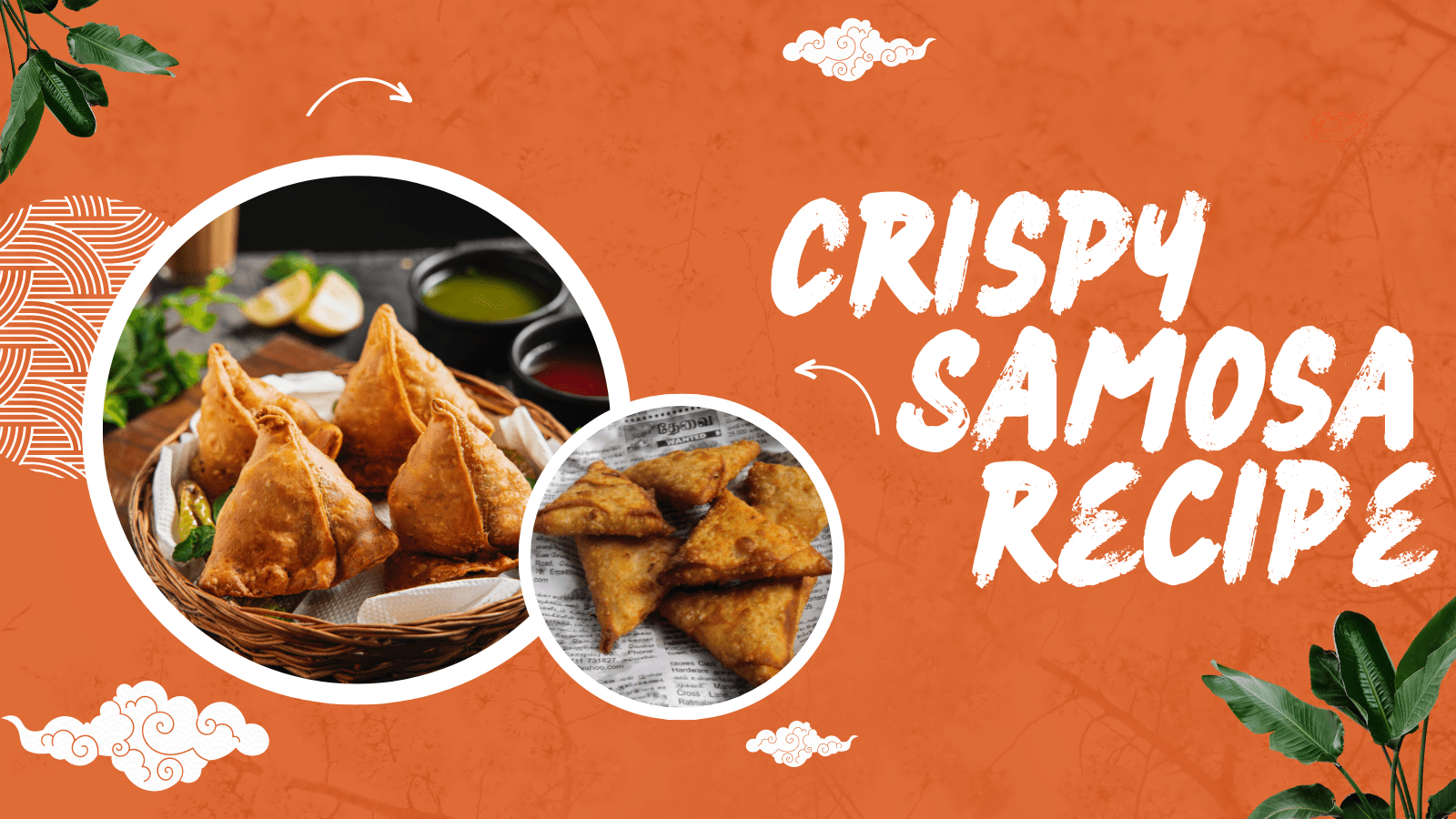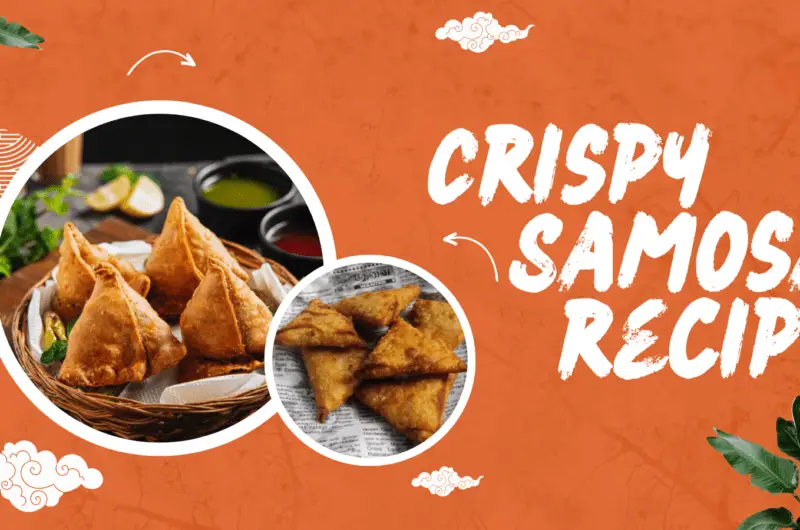Samosa is a popular street food in India, and Pakistan, Samosa banane ki Recipe is known for its crispy exterior and flavorful filling. By following this easy-to-follow recipe, you can recreate the authentic taste of samosas right in your own kitchen. So let’s begin and set out on a gastronomic journey! In this article, we will guide you through the process of making delicious samosas at home.
Samosa is a deep-fried pastry with a crispy outer layer and a mouthwatering filling. In India, it is a widely consumed snack that appeals to all age groups. Whether you’re hosting a party, craving a tasty snack, or looking for an appetizer for a special occasion, samosas are an excellent choice.
To prepare the samosa dough, all-purpose flour is mixed with salt, a small amount of vegetable oil, and water. The ingredients are kneaded together to form a smooth and firm dough. This dough is then allowed to rest for about 30 minutes, which helps in achieving a better texture.
Samosa Banane Ki Recipe Easy
To shape the samosas, the dough is divided into small equal-sized balls. Each ball is rolled out into a thin oval-shaped sheet. The sheet is then cut in half, and the straight edge is moistened with water. The moistened edge is folded to form a cone shape, which is filled with the prepared potato filling. The open edges of the cone are moistened and pressed together to seal the samosa, ensuring that the filling remains intact during frying.
The samosas are then deep-fried until they turn golden brown and acquire a crispy texture. Once fried, they are removed from the oil and placed on a tissue-lined plate to absorb excess oil. The hot and crispy samosas are traditionally served with mint chutney, tamarind chutney, or tomato ketchup. They can be enjoyed as a standalone snack or paired with a cup of hot masala chai for a delightful tea-time experience.
Samose Banane Ki Recipe: Samose Kese Banaye
Course: Crispy SamosaCuisine: Recipe4
servings15
minutes30
minutes300
kcalSamosa is a popular Street Food in India, Pakistan
Ingredients
All-purpose flour
Salt
Vegetable oil
Water
For the Filling:
Potatoes
Green peas
Onion
Green chili
Ginger
Cumin seeds
Coriander powder
Turmeric powder
Garam masala
Salt
Oil for frying
Directions
- In a mixing bowl, combine all-purpose flour, salt, and a tablespoon of vegetable oil.
- Gradually add water to the mixture and knead until you achieve a firm and smooth dough.
- For around 30 minutes, cover the dough with a moist cloth and allow it to rest.
- The potatoes must be boiled until they are tender and soft. Peel them and mash them gently.
- In a pan, add cumin seeds to the hot oil. Once they splutter, add finely chopped onions and sauté until golden brown.
- Add ginger, green chili, and green peas to the pan. Cook for a few minutes until the peas are tender.
- Add salt, garam masala, turmeric, coriander powder, and now. Mix well.
- Finally, add the mashed potatoes to the pan and stir until all the ingredients are combined. Remove from heat and let the filling cool.
- Divide the dough into small equal-sized balls.
- Take one dough ball and roll it into a thin oval-shaped sheet.
- Cut the sheet in half and wet the straight edge with water.
- Fold the straight edge of the sheet to form a cone shape and seal the edges firmly.
- Fill the cone with the prepared potato filling, leaving some space at the top.
- To seal the samosa, wet the open cone edges with water and press them together.
- For frying, warm the oil in a large pan or kadai.
- As soon as the oil is hot, carefully lower the samosas into it, being careful not to crowd the pan.
- Fry the samosas on medium heat until they turn golden brown and crispy.
- Remove the fried samosas from the oil and place them on a tissue-lined plate to absorb excess oil.
Samosa Recipe in Urdu Video
Notes
- For a healthier alternative, you can bake the samosas instead of frying them.
- Experiment with different fillings such as minced meat, paneer, or mixed vegetables to cater to different preferences.
- Add a pinch of chaat masala to the filling for an extra tangy taste.
- Ensure that the oil is hot enough before adding the samosas to avoid them from becoming oily.
Related Posts:
Serving and Enjoying
Samosas are best enjoyed hot and crispy. Here’s how you can serve them:
- Serve samosas with mint chutney, tamarind chutney, or tomato ketchup.
- You can also pair them with a hot cup of masala chai for a delightful tea-time snack.
- Add finely chopped coriander leaves as a garnish for visual appeal and flavour.
Conclusion
Making samosas at home is a rewarding experience that allows you to savor the flavors of this beloved Indian snack. With a crispy crust and a delicious filling, samosas are perfect for parties, gatherings, or simply as a delightful evening snack. By following the step-by-step instructions outlined in this article, you can create samosas that are as good as those from your favorite Indian restaurant. So, gather your ingredients, roll up your sleeves, and embark on a culinary journey to enjoy the delightful flavors of homemade samosas!
Frequently Asked Questions (FAQs)
Can I make the samosa dough in advance?
Yes, you can prepare the dough in advance and store it in the refrigerator for up to 2 days.
Can I freeze samosas?
Yes, you can freeze the shaped but uncooked samosas. Just place them in a ziplock bag and freeze. When you want to fry them, thaw them for a few minutes and then fry as usual.
Is it possible to use whole wheat flour for all-purpose flour?
Yes, you can use whole wheat flour in place of all-purpose flour for a healthier option. The taste and texture, however, can be a little different.
Can I add other spices to the filling?
Absolutely! Feel free to add spices like fennel seeds, cinnamon, or cardamom to enhance the flavor according to your taste preferences.
How long can I store leftover samosas?
You can store leftover samosas in an airtight container in the refrigerator for up to 2-3 days. Reheat them in the oven or on a tawa (griddle) before serving.




3 thoughts on “Samosa Banane Ki Recipe: Samose Kese Banaye”